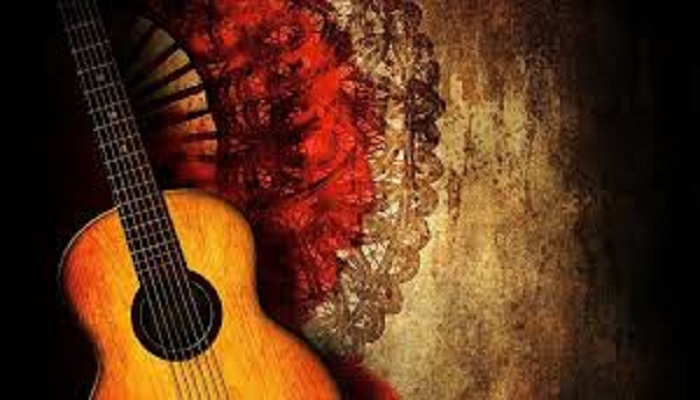Learning Flamenco guitar techniques can be an enriching experience for classical guitarists, as it expands their musical vocabulary and introduces new rhythmic and expressive elements. Flamenco, with its dynamic and passionate style, offers unique techniques that can complement and enhance classical guitar playing. Here’s a guide to integrating Flamenco guitar techniques into your classical guitar repertoire:
Understanding Flamenco Guitar Basics
- Historical Context: Flamenco guitar originates from Spain, particularly the Andalusian region. It’s deeply rooted in Spanish folk music and dance, known for its rhythmic intensity and emotional expressiveness.
- Stylistic Differences: Unlike classical guitar, which emphasizes subtlety and nuance, Flamenco guitar is characterized by its powerful and rhythmic strumming patterns, fast-paced techniques, and distinct tonal quality.
Key Flamenco Techniques
Rasgueado
- Definition: Rasgueado is a strumming technique used to produce a powerful and rhythmic sound. It involves a series of rapid, flicking motions of the fingers.
- Execution: Start with the thumb and index finger, then include the middle and ring fingers in rapid succession. The fingers should flick outward, brushing the strings to create a percussive effect.
- Practice: Begin slowly, focusing on the evenness and clarity of each stroke. Gradually increase speed while maintaining control and rhythmic accuracy.
- Application: Useful for creating energetic and rhythmic accompaniment in Flamenco pieces.
Alzapúa
- Definition: Alzapúa is a technique that combines thumb strokes and finger plucking to create a driving rhythm and dynamic sound.
- Execution: Use the thumb to perform a downward stroke followed by an upward stroke. Incorporate finger plucking for melody lines or additional rhythmic accents.
- Practice: Focus on achieving a smooth, fluid motion with the thumb and fingers. Practice the technique in various rhythmic patterns and tempos.
- Application: Adds rhythmic complexity and rhythmic drive to Flamenco compositions.
Picado
- Definition: Picado involves fast, alternate picking with the index and middle fingers to achieve a crisp, articulate sound.
- Execution: Alternate between the index and middle fingers, maintaining evenness and precision. Use a relaxed hand position and minimal finger movement to maximize speed.
- Practice: Start with simple scales and gradually increase speed while focusing on evenness and clarity. Use a metronome to develop rhythmic accuracy.
- Application: Ideal for playing fast melodic lines and scales in Flamenco and can be adapted for classical pieces requiring speed and precision.
Arpeggio
- Definition: Flamenco arpeggios involve rapid, rolling patterns of thumb and fingers to create a flowing, rhythmic accompaniment.
- Execution: Use the thumb for the bass notes and the index, middle, and ring fingers for the higher notes. Practice both ascending and descending patterns.
- Practice: Work on evenness and clarity of each note, paying attention to the rhythmic flow and dynamic contrasts.
- Application: Provides a rhythmic foundation and adds texture to Flamenco compositions.
Integrating Flamenco Rhythms (Compás)
- Definition: Compás refers to the intricate rhythmic cycle that structures Flamenco music. Each style (or “palos”) has its own specific compás.
- Common Compás: Familiarize yourself with traditional Flamenco rhythms such as 12/8 (for Soleá and Bulerías) and 4/4 (for Tangos).
- Practice: Use a metronome or drum machine set to Flamenco rhythms to develop a strong sense of timing and rhythmic phrasing. Practice clapping or tapping out the compás to internalize the rhythm.
- Application: Understanding and applying compás is crucial for playing Flamenco pieces accurately and effectively.

Enhancing Musical Expression
- Dynamic Control: Flamenco guitarists use dynamic contrasts to enhance the expressiveness of their playing. Practice varying the intensity of your strumming and finger techniques to convey different emotions.
- Emotional Expression: Flamenco music is known for its passionate and intense character. Incorporate this emotional depth into your playing by focusing on the expressive qualities of the techniques.
Practice Strategies
- Slow Practice: Begin by practicing each Flamenco technique slowly to develop muscle memory and accuracy. Gradually increase speed while maintaining control and precision.
- Focus on Technique: Isolate and practice individual techniques before incorporating them into full pieces. Ensure that each technique is executed cleanly and effectively.
- Apply to Repertoire: Integrate Flamenco techniques into classical pieces or study specific Flamenco compositions to see how these techniques enhance your playing.
Learning Resources
- Tutorials and Classes: Consider taking Flamenco guitar lessons from a qualified instructor who specializes in the style. Online tutorials and video lessons can also provide valuable insights and demonstrations.
- Listening and Analysis: Listen to recordings of renowned Flamenco guitarists to understand the application of techniques and stylistic nuances. Analyze their performances to gain a deeper understanding of the music.
Building a Repertoire
- Start with Simple Pieces: Begin by learning simpler Flamenco pieces that incorporate the techniques you’ve practiced. Gradually progress to more complex compositions as your skills improve.
- Explore Different Palos: Familiarize yourself with various Flamenco styles (palos) such as Soleá, Bulerías, and Tangos. Each style has unique characteristics and requires specific techniques.
Conclusion
Integrating Flamenco guitar techniques into your classical guitar playing can significantly enhance your technical and expressive abilities. By mastering techniques like rasgueado, alzapúa, picado, and arpeggio, as well as understanding Flamenco rhythms and musical expression, you can enrich your classical guitar repertoire and explore new musical horizons. Embrace the passion and energy of Flamenco to bring a fresh and dynamic perspective to your guitar playing
